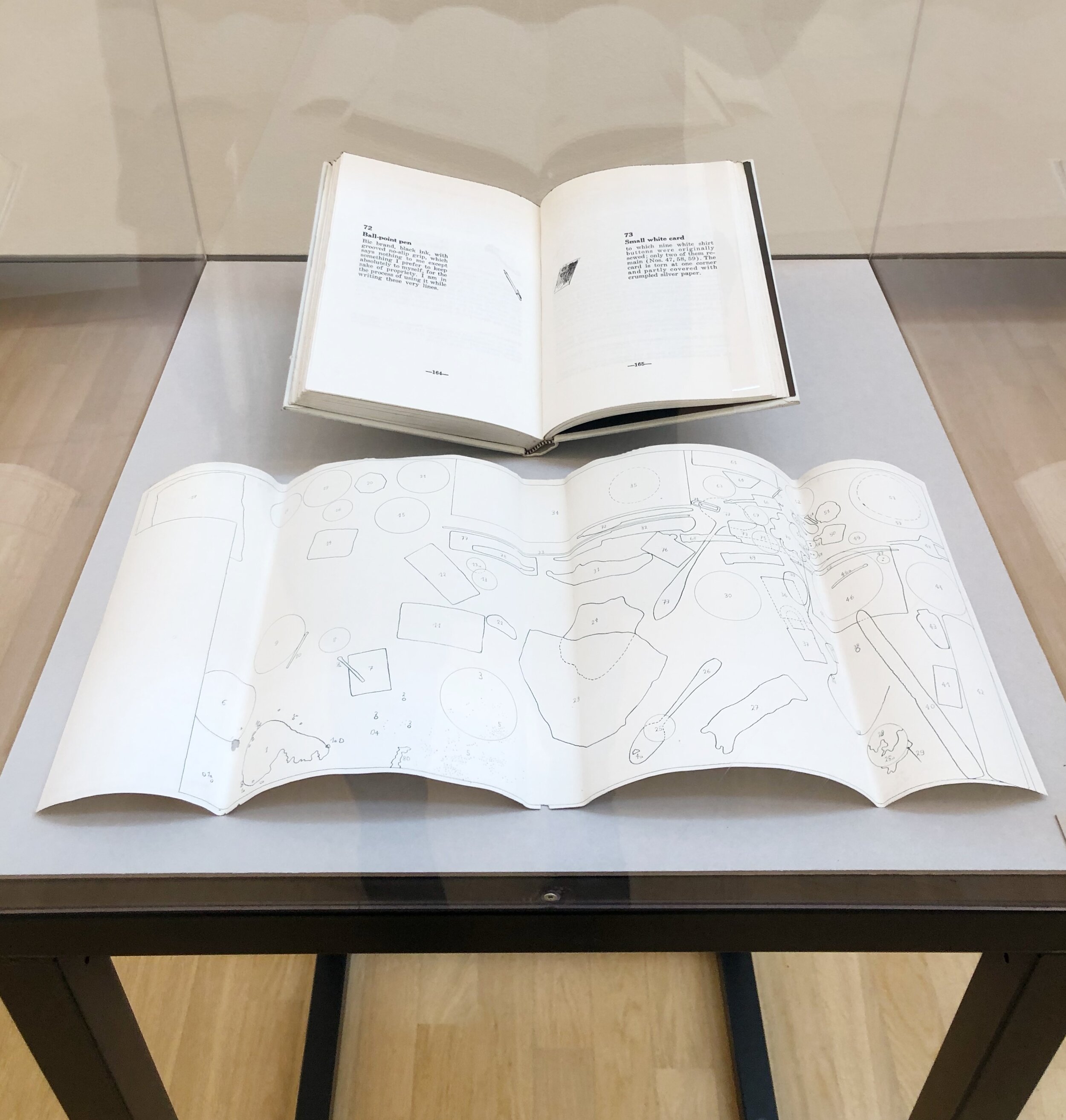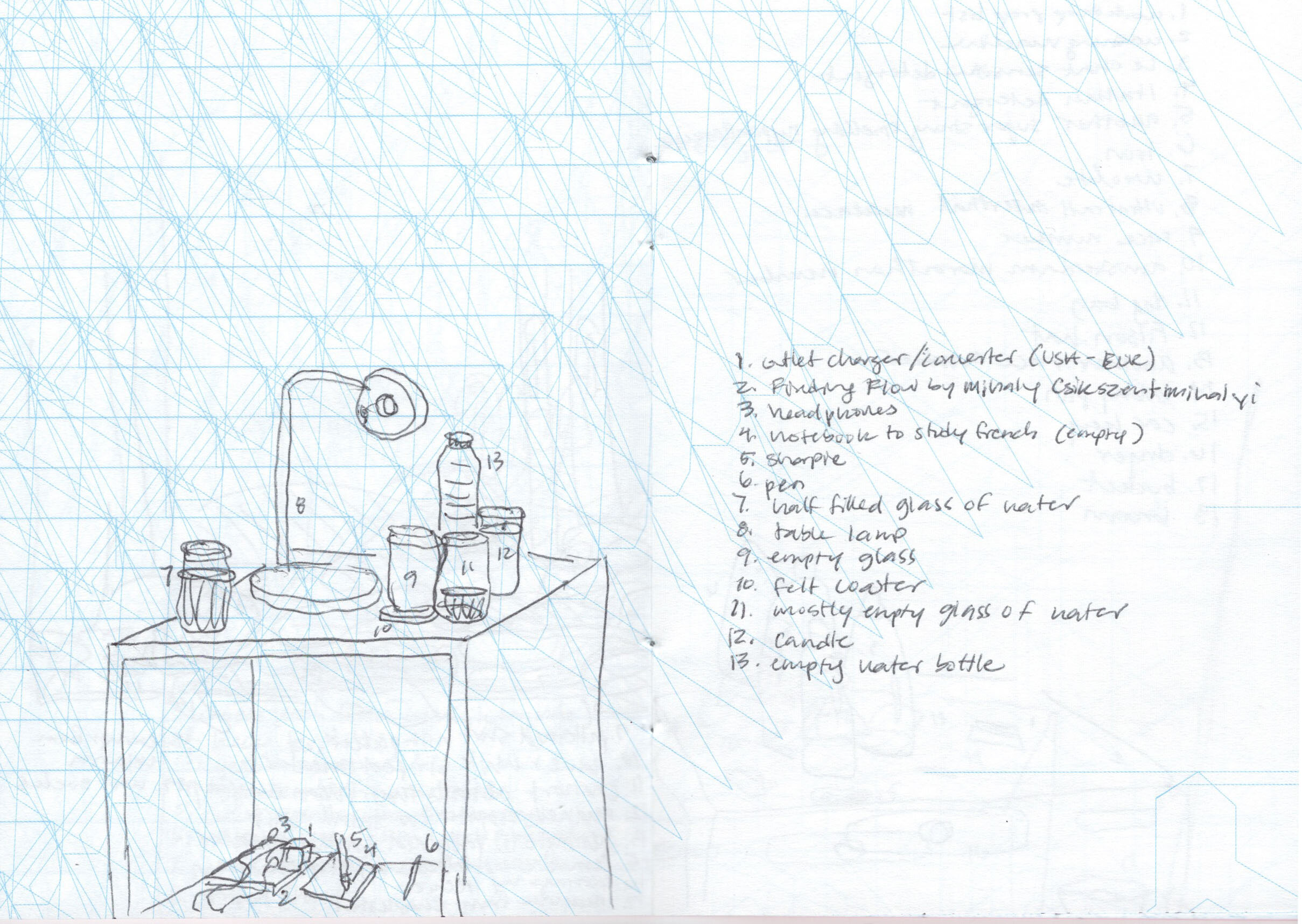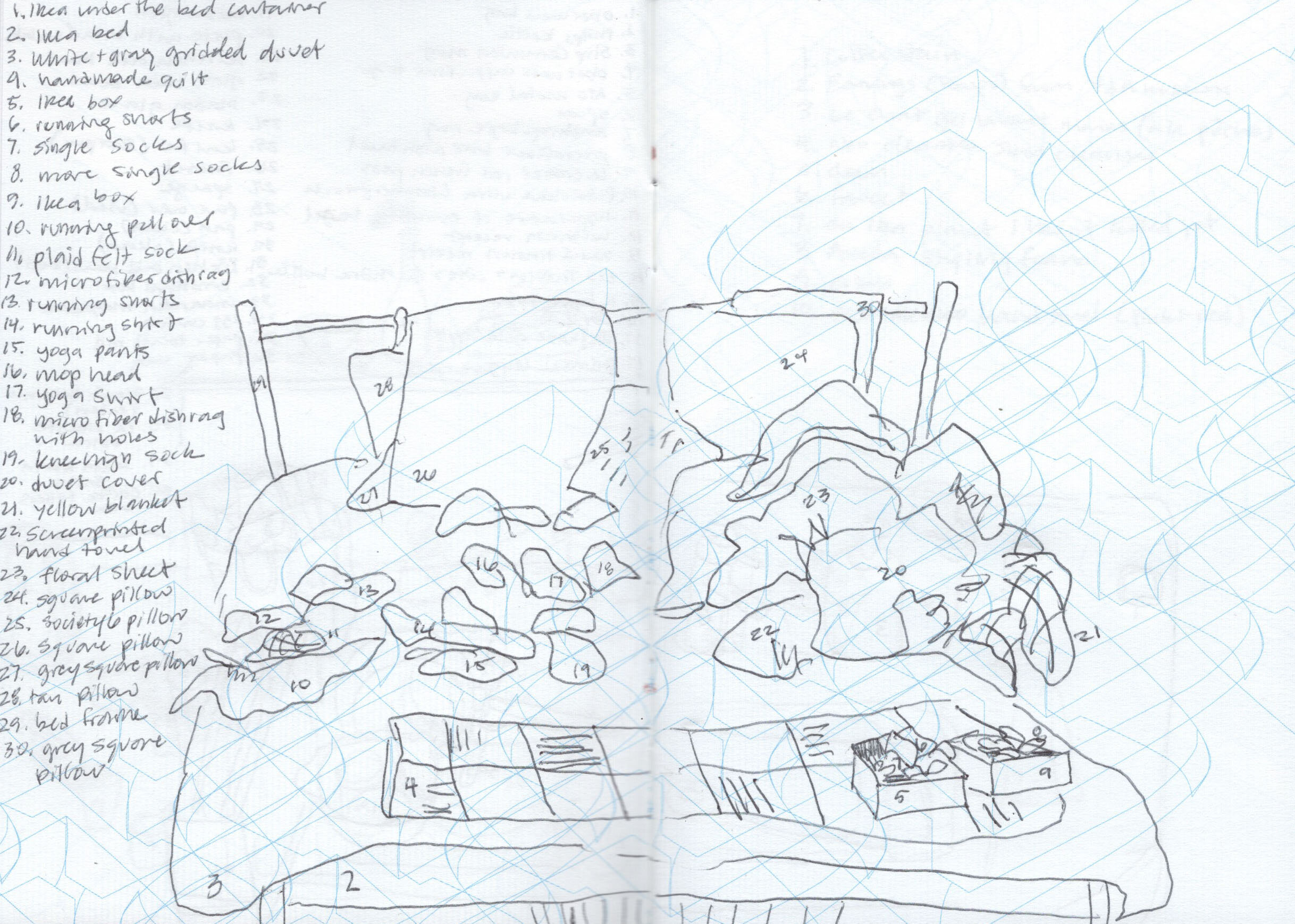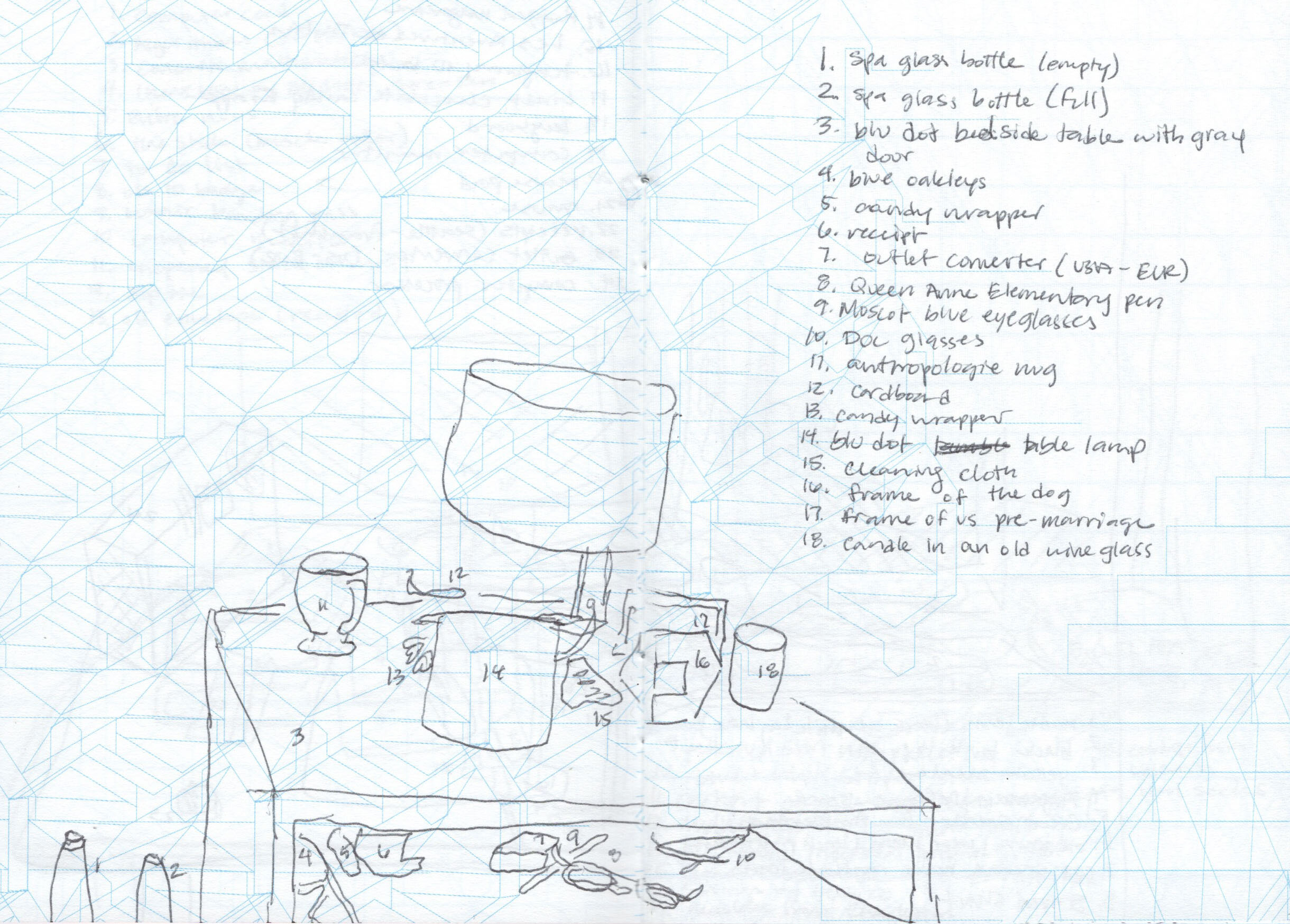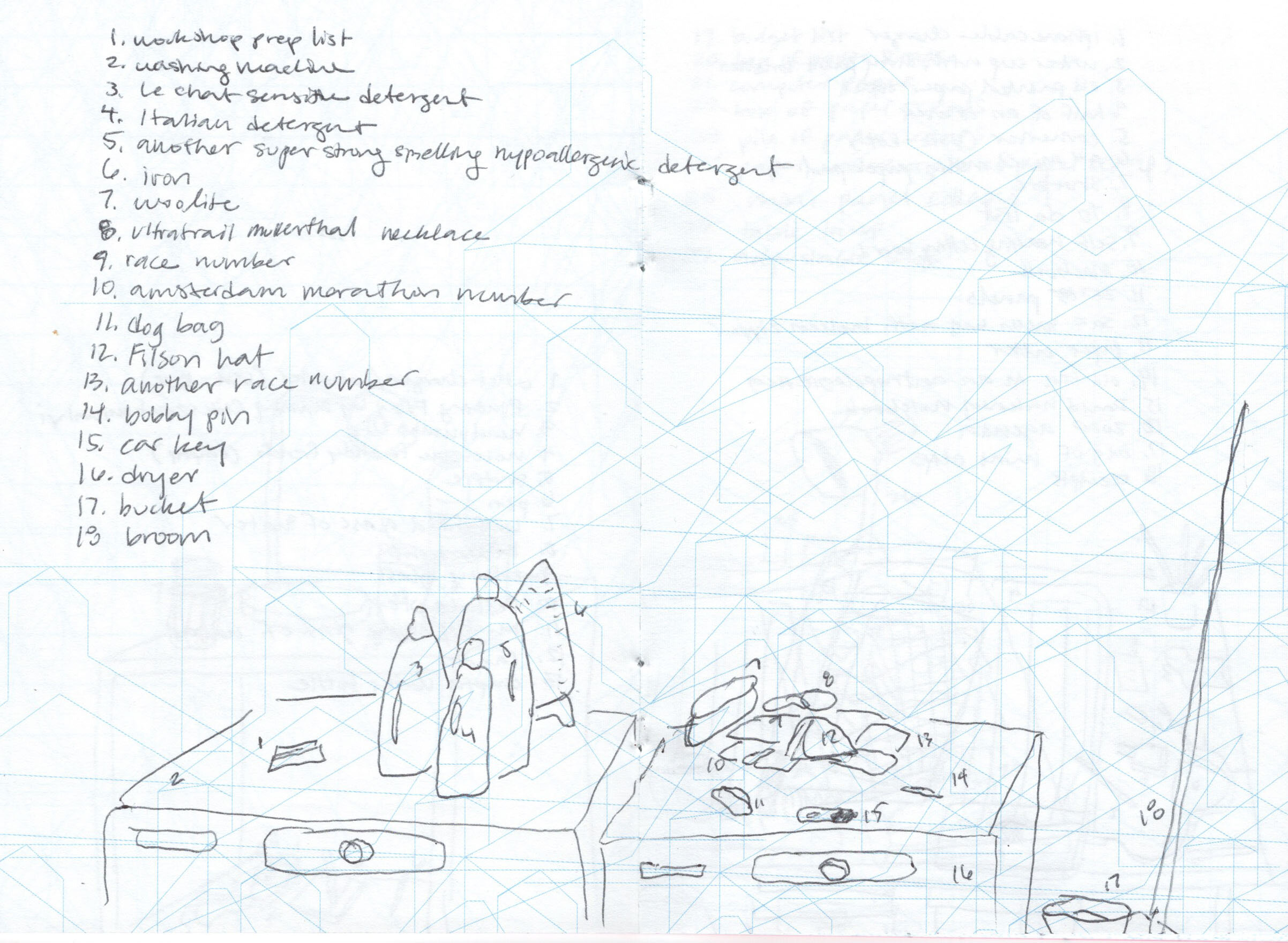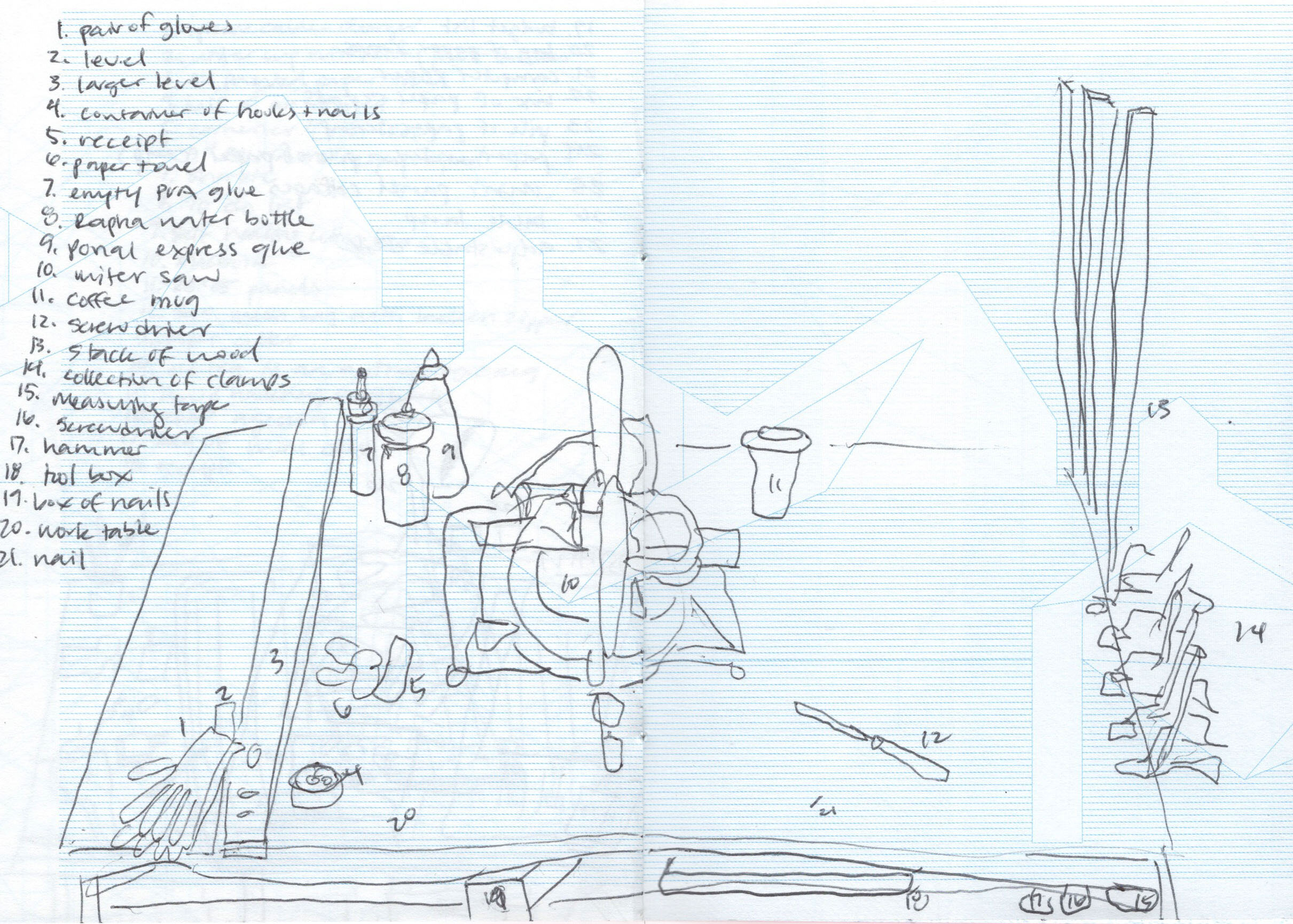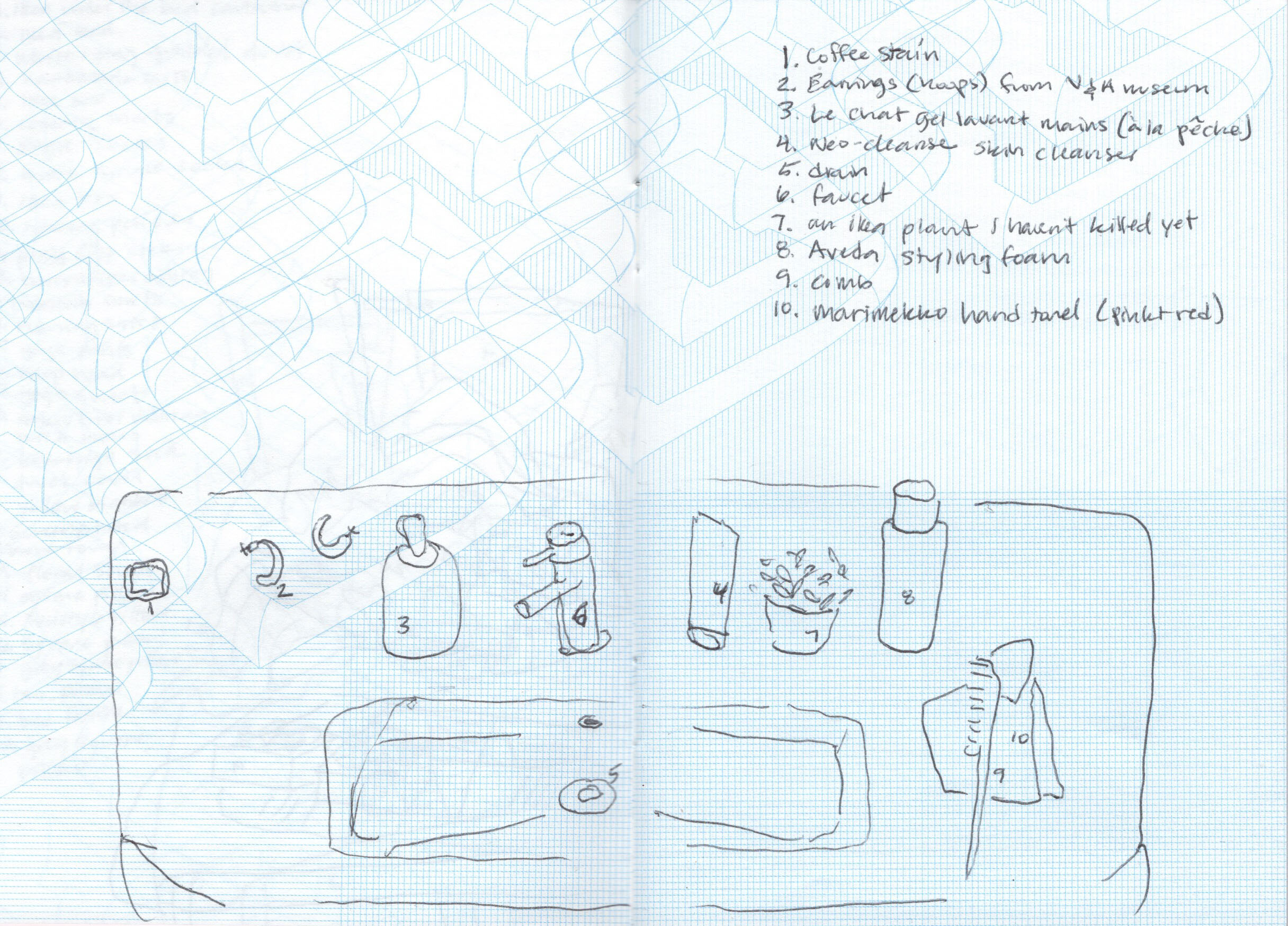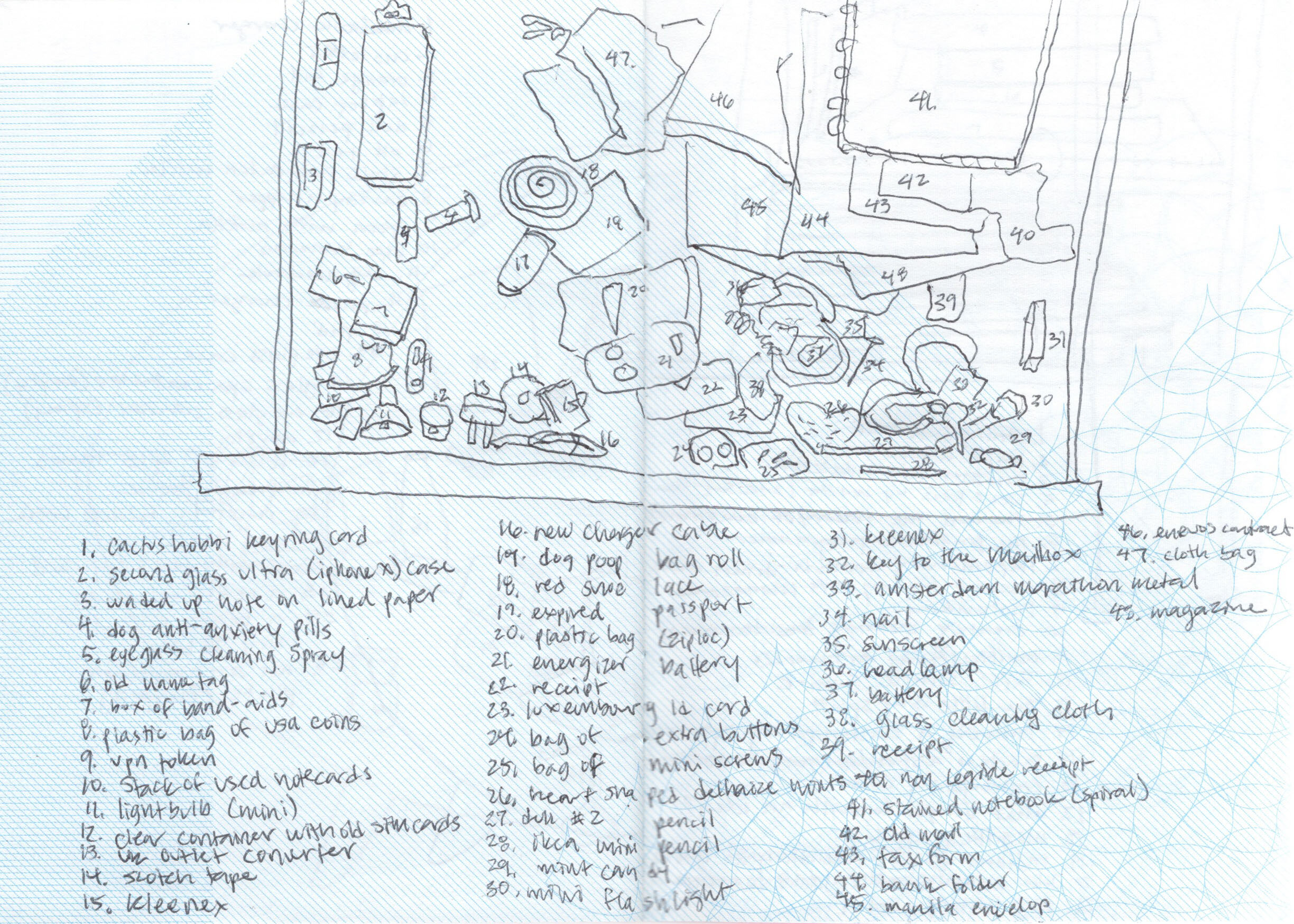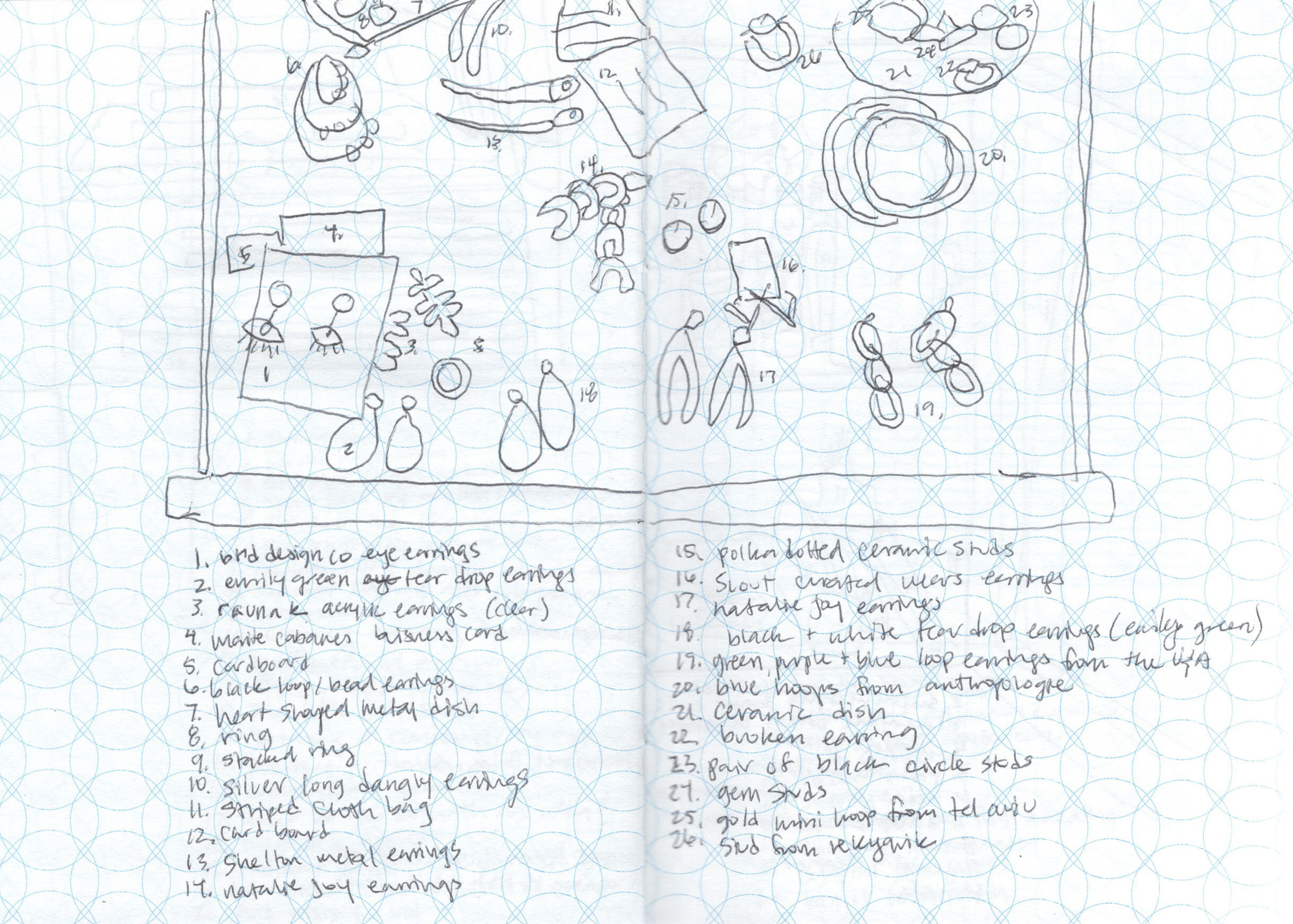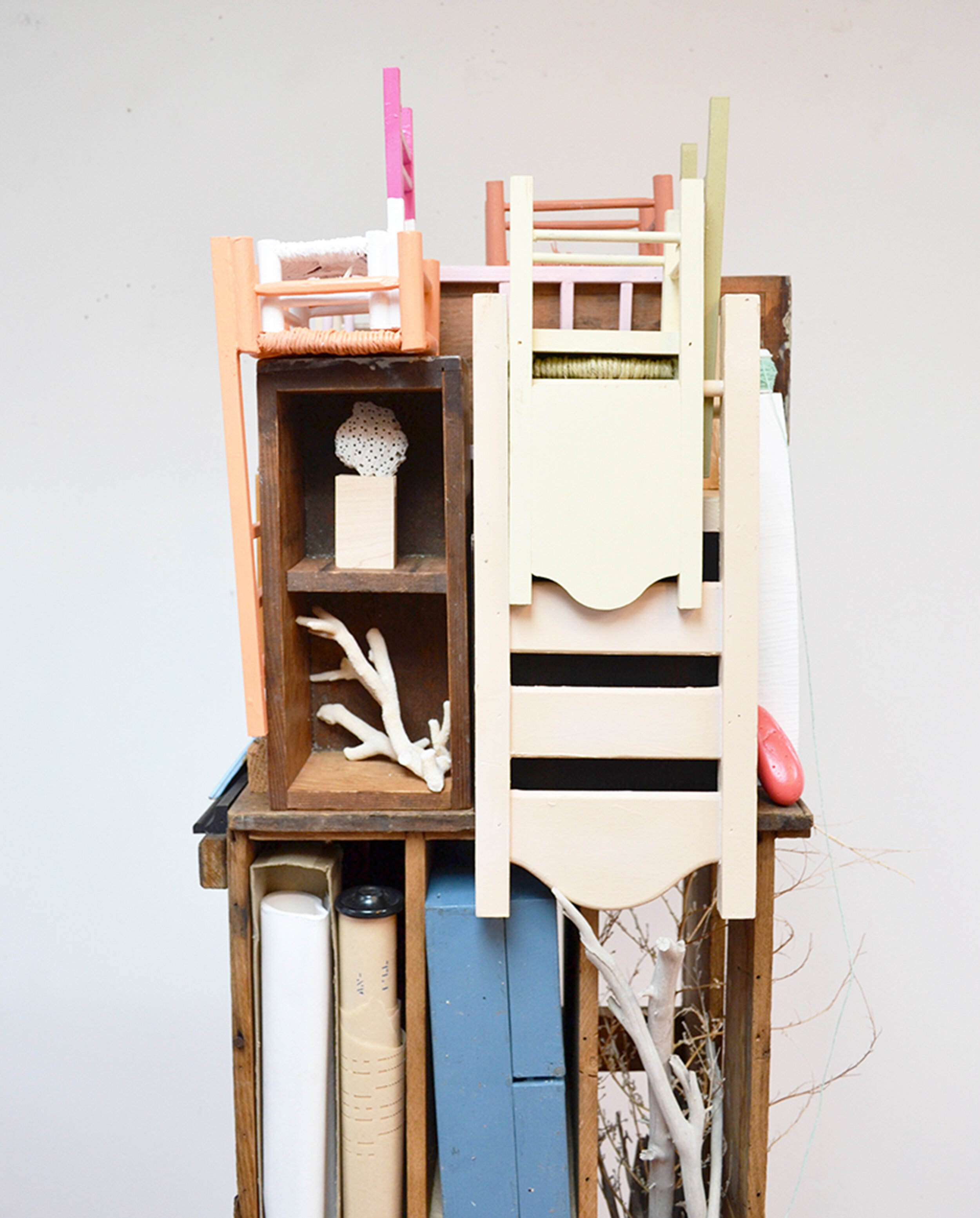Daniel Spoerri is a Swiss artist and writer born in Romania in 1930. He is most well known for his “snare-pictures” and corresponding book, “The Anecdoted Topography of Chance.”
I interpret Spoerri’s snare-pictures as a game of creating maps that simultaneously avoid cleaning. However, his definition is a depiction of objects found in chance positions at a particular time and in a particular location, fixed in place either through assemblage or drawn diagrams.
An Anecdoted Topography of Chance, Page 241: FOLDOUT, Daniel Spoerri, Cubist View of My Room, No 13, Hotel Carcassonne, at 24 rue Mouffetard, Paris 5éme, taken according to my instructions by Vera Mertz Spoerri in 55 individual photographs and mounted on plywood, 189 by 88 cm, 1961
“In my room, No. 13 on the fifth floor of the Hotel Carcassonne at 24 Rue Mouffetard, to the right of the entrance door, between the stove and the sink stands a table…I have set out to see what the objects on a section of table might suggest to me, what they might spontenously awaken in me in describing them: the way SHERLOCK HOLMES, starting out with a single object, could solve a crime or historians, after centuries, were able to reconstitute a whole epoch from the famous fixation in history, Pompeii.”
-Daniel Spoerri, 1962 from An Anecdoted Topography of Chance, p. 23
“…his original idea, to trap reality in a snare. To pin it, stuffed to the wall of blank page…He was concerned above all with exhausting the potential descriptions of a Parisian scene at a particular moment in time.” - Roland Topor
An Anecdoted Typography of Chance, page 148-149 (Object 46: Greenish Bakelite ashtray - Object 46a: Burnt match in ashtray
In my version, the updated 1966 publication of Spoerri’s “An Anecdoted Typography of Chance,” co-written by Spoerri and his friends - the book is classified as an “artist book, a novel of digressions, a rambling conversation, a game, an encyclopedia, a cabinet of wonders and even a celebration of friendship and creativity.”
The book meticulously notes every object depicted in the Topographical Map of Chance, 17 October 1961, snare-picture and records each object’s evoked associations, memories and anecdotes.
An Anecdoted Typography of Chance, page 149: 46a: Burnt Match
Partly influenced by the multi-faceted recordings of “symbols as old discarded stuff,” and my own reflections on the current state of my house, I began outlining my collection of domestic battles with never ending mess.
A Collection of Little & Rather Big Messes (Did they clean themselves, we’ll never know) in a mini pink &Luxembourg notebook, designed by Isabelle Mattern
Fed up with my cyclical chores, I went from room to room, surface to surface, documenting the various: piles, stacks, mountains, lumps, bumps, towers, and labyrinths of mazes in and around my home.
37 Objects on the Dining Room Table, 2020
When I think about how objects I choose to live with paint a type of portrait with the meaning and symbolism I’ve projected on them, I start to see a different kind of narrative within the chaos of my mess.
On my studio table, I see evidence of the creative process, forgotten cold tea included.
My messes reflect the relationship of my things to my environment, like my pile of clothes burying my window sill, with folds, mimicking the very shapes and forms within the landscape seen from the window behind it.
19 objects on my window sill
In the same vein, overlapping messes of a shared meal, the leftover dirty dishes reveal a type of exchange akin to a conversation, like the the way two different people inhabit and utilize objects in shared spaces, but in this case, the privacy of the home.
Beginning of the week vs end of the week.
In MacGuffin Magazine, Issue No. 5, critic, Sam Jacob contributes an essay, Life Among Things.
“Jump cut to the very room you are in and look at all the stuff around you. Can you explain all this stuff? What it’s doing there? Why you have it? Why you keep it? How could we begin to describe our life with objects?
-Sam Jacob, “Life Among Things,” an essay to accompany the exhibition, “Finders Keepers” at the Het Nieuwe Instituut in Rotterdam
In fiction, a MacGuffin (sometimes McGuffin) is an object, device, or event that is necessary to the plot and the motivation of the characters, but insignificant, unimportant, or irrelevant in itself. (From Wikipedia)
What most snare-pictures don’t reveal, are the hidden objects, tucked away in cabinets and drawers. Think of all the junk drawers, the stuff we don’t want to clutter our counters, the many secrets we hide from ourselves and others.
Even Walter Benjamin, who famously wrote the classic essay, “The Work of Art in the Age of Its Technological Reproducibility,” (1935-1936), writes of cabinets as mirrors of our culture, both ‘veil’ and ‘what is veiled’, in his autobiography, “Berlin Childhood Around 1900.”
Kirsten Algera and Ernst van der Hoeven, editors of MacGuffin Magazine, describe “Benjamin’s cabinet odyssey” as exhibiting the same characteristics of what make cabinets interesting: to show, hide, and keep things.
Saving Seats & Storing Secrets, was a stacked sculpture created from a former rejected cabinet. Never exhibited publicly, it was built to demonstrate objects as carriers of memory, serving as boundary markers for the symbolic configurations known as home - a former snare-picture of sorts.



